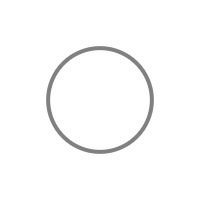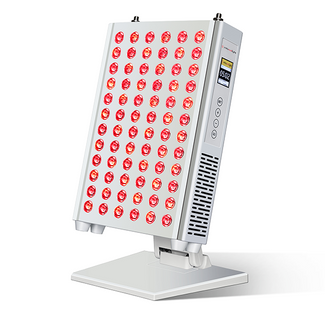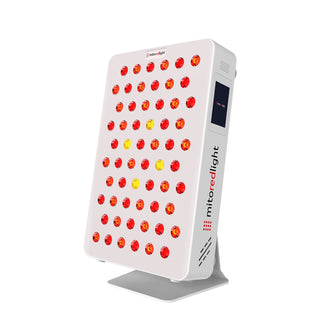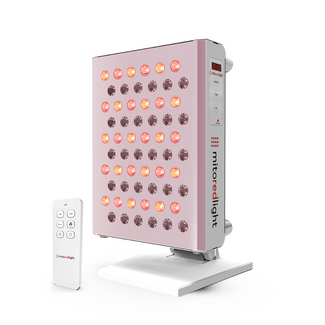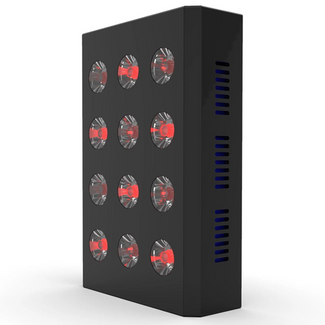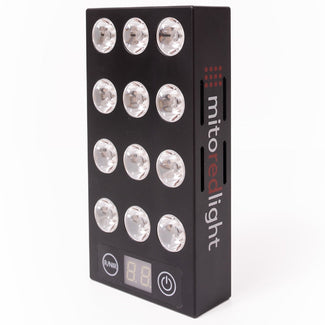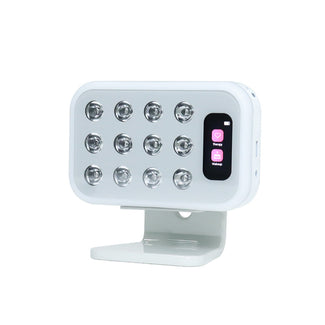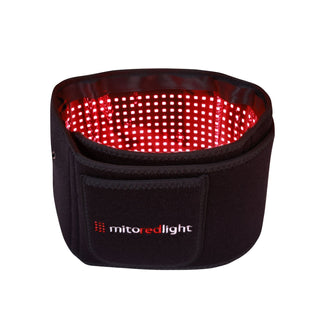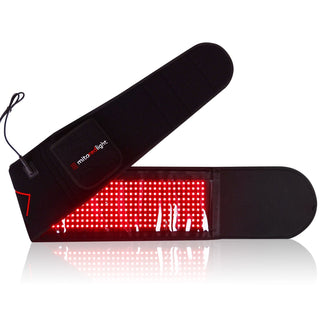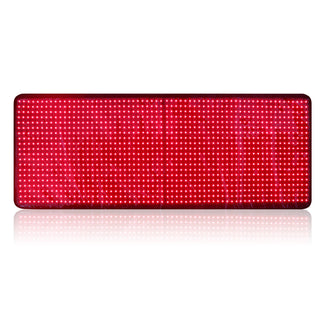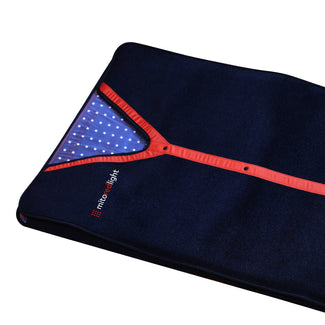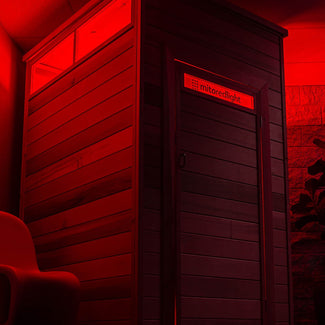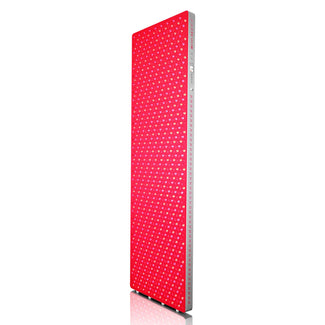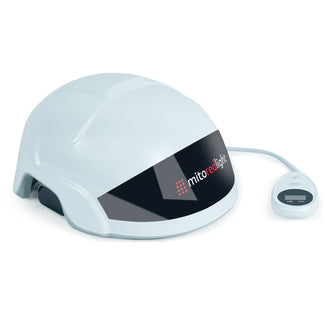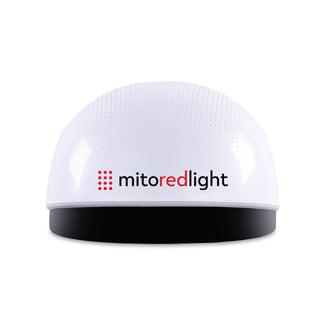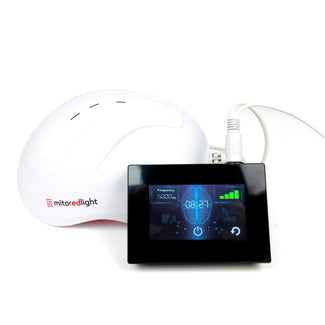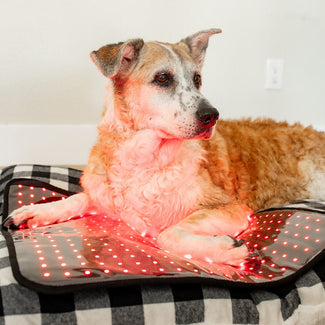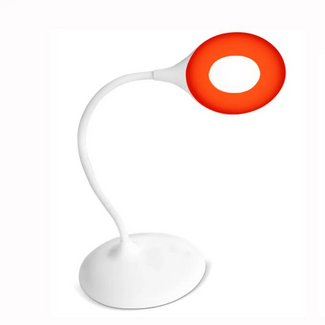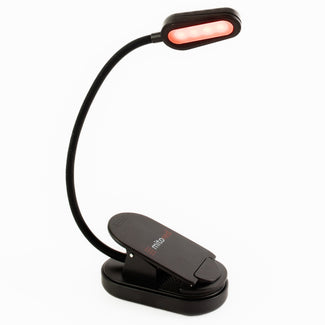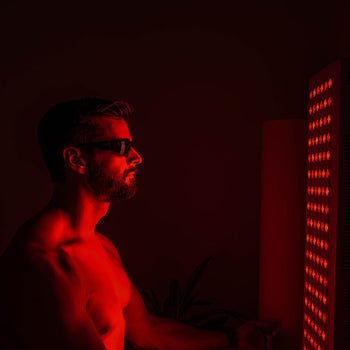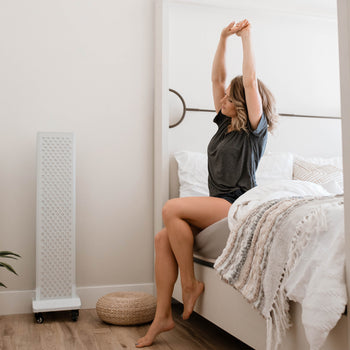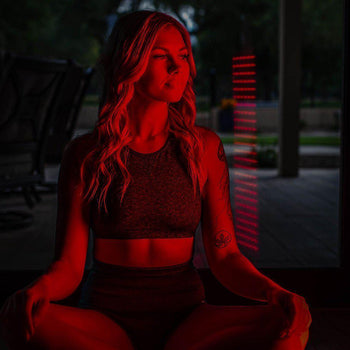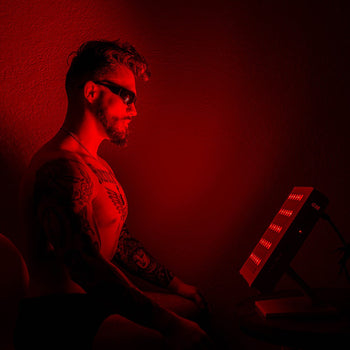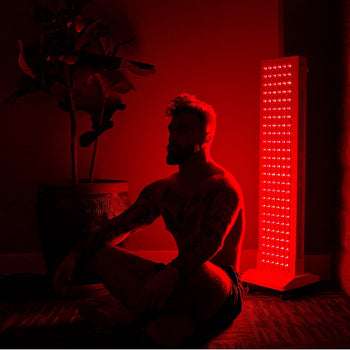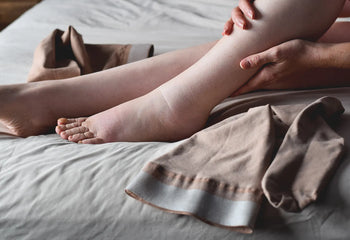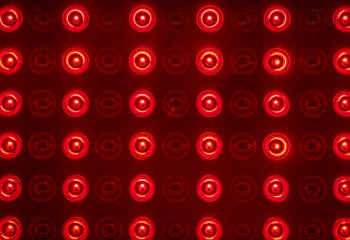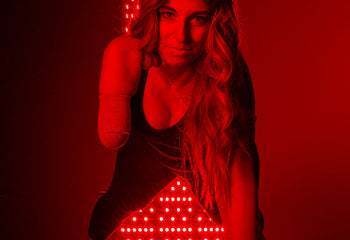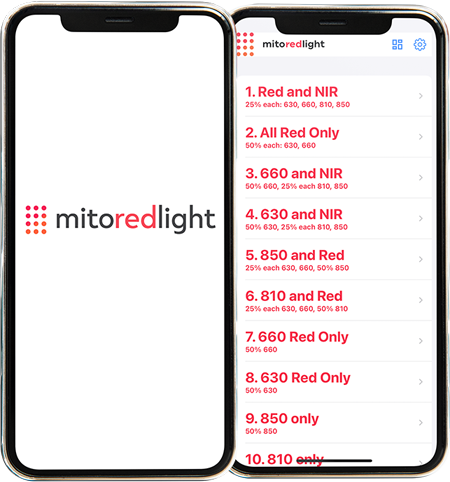Table of Contents
When it comes to cold sores, Mito Red Light is turning the spotlight on a science-driven solution that's as promising as it is practical — red light therapy. This innovative approach goes beyond surface-level fixes, diving deep into cellular health to offer a new angle on potentially helping to manage the nuisance of cold sores.
Built on scientific research and a commitment to wellness, we're here to guide you through the ins and outs of how this red light therapy might be the game-changer you've been looking for.
What Is Red Light Therapy? What Are Cold Sores?
Red light therapy, also known as photobiomodulation or low-level laser therapy (LLLT), is a non-invasive method that uses low-level red or near-infrared light to support skin health in various ways, including when it comes to cold sores. Cold sores, also known as fever blisters or herpes simplex labialis, are small, fluid-filled blisters that appear on or around the lips and are caused by the herpes simplex virus (HSV). Cold sores are a common condition that affects around two-thirds of the world's population. They are highly contagious and can cause significant discomfort, pain, and embarrassment for those who suffer from them.
Red light therapy works (in part) by supporting healthy blood flow and oxygenation to the treated area, which may help promote healing and reduce inflammation. The specific wavelengths of light used in red light therapy have been shown to potentially help support the proper production of collagen and elastin, two proteins that are essential for healthy skin. This can help to improve the appearance of fine lines and wrinkles, as well as promote overall skin health.
Studies Supporting Red Light Therapy for Cold Sores
There have been several studies conducted to evaluate the effectiveness of red light therapy as an option for managing cold sores.
In a 2013 study published in "Clin Exp Dermatol" by Dougal G, and Lee SY, low-level light therapy using 1072 nm infrared light was found to be effective in supporting the healing process and timeline of cold sore outbreaks.
Another study, published in 2017 in the "J Clin Exp Dent" by Honarmand M, Farhadmollashahi L, Vosoughirahbar E, compared the use of a light-emitting diode laser to acyclovir cream and found that the laser treatment was more effective in reducing the duration of symptoms.
In 2006, a randomized double-blind study published in "Clin Exp Dermatol" by Hargate G, compared the effect of 1072-nm light energy against a placebo for the treatment of herpes labialis. Results showed that there was a significant reduction in the duration of symptoms and healing time in the group treated with red light therapy.

A 2010 study published in "Lasers Med Sci" by de Carvalho RR, de Paula Eduardo F, Ramalho KM, Antunes JL, Bezinelli LM, de Magalhães MH, Pegoretti T, de Freitas PM, de Paula Eduardo C, investigated the effect of laser phototherapy on preventing recurrent herpes labialis and found that the treatment was effective in reducing the frequency of outbreaks.
Additionally, a 2012 study published in "Photomed Laser Surg" by Muñoz Sanchez PJ, Capote Femenías JL, Díaz Tejeda A, Tunér J found that 670-nm low laser therapy was effective in reducing the severity of symptoms associated with herpes simplex type 1.
A 2014 study published in "Lasers Med Sci" by de Paula Eduardo C, Aranha AC, Simões A, Bello-Silva MS, Ramalho KM, Esteves-Oliveira M, de Freitas PM, Marotti J, Tunér J, made a literature review on the laser treatment of recurrent herpes labialis.

The mechanism of action of red light therapy in cold sores is not fully understood, but it is believed that the light may help to reduce inflammation, promote wound healing, and support the body’s healing processes. Red light therapy may also support the immune system’s response to the virus, helping to fight off the infection.
It is important to note that red light therapy should not be used as a substitute for traditional cold sore treatment options, such as antiviral medications or topical creams. Rather, it should be used in conjunction with these treatments to enhance their effectiveness and accelerate healing.
Other cold sore treatments include antiviral medications, such as acyclovir, valacyclovir, and famciclovir, which can be taken orally or applied topically to reduce the duration and severity of cold sores. Topical creams and ointments, such as docosanol and benzyl alcohol, can also be used to relieve pain and itching associated with cold sores.
How To Use Red Light Therapy for Cold Sores
While not a cure, red light therapy could be a handy addition to your overall healing lineup when you’re working to manage cold sores. Here’s how to get started and what to know:
Timing Is Everything
Starting red light therapy sessions at the first sign of a cold sore can be a key way to make sure you reap the benefits. Acting on it early can help you find some relief before your cold sore worsens and causes more severe discomfort.
Consistency Is Key
Consistency is key, especially when it comes to red light therapy. Stick to a routine, using RLT on the affected area on a daily basis — just be sure to always follow the instructions. Make RLT a non-negotiable part of your day for the best results.
Safety Aways
Always make sure to follow your red light therapy device's guidelines for safety purposes and best results. It’s also generally beneficial to wear protective eyewear to keep your eyes safe during sessions.
It’s a good idea to consult your healthcare provider before adding RLT to your health routine, especially if you’re taking certain medications or dealing with specific health conditions. Your doctor can work with you to give you personalized advice.
Integrate Into Your Routine
Red light therapy may work best when used alongside a healthy lifestyle and any doctor-recommended plans.
By combining red light therapy with your usual creams and medications, you may be able to boost their healing powers. It’s not about choosing one over the other — it’s about how they work together to give you relief and healing.
Keep the Area Clean
When it comes to managing cold sores, cleanliness is your first line of defense. Keep the affected area clean and make sure to regularly wash your hands. Keep your lip balm, towels, and anything else that touches your lips in a no-share zone to keep viruses from spreading.
Be Patient
Experiencing the full benefits of red light therapy won’t necessarily happen overnight. Don't expect immediate miracles.
Give your body the time to respond to the sessions — consistency and patience are your friends here. Stick with it, and you'll start to see the light at the end of the tunnel.
Related: Everything You Need to Know About Red Light Therapy and Inflammation
Best Red Light Therapy for Cold Sores at Home
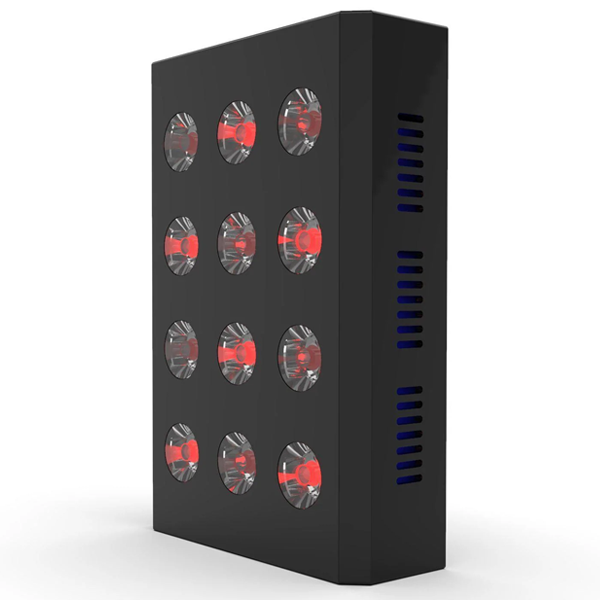 |
 |
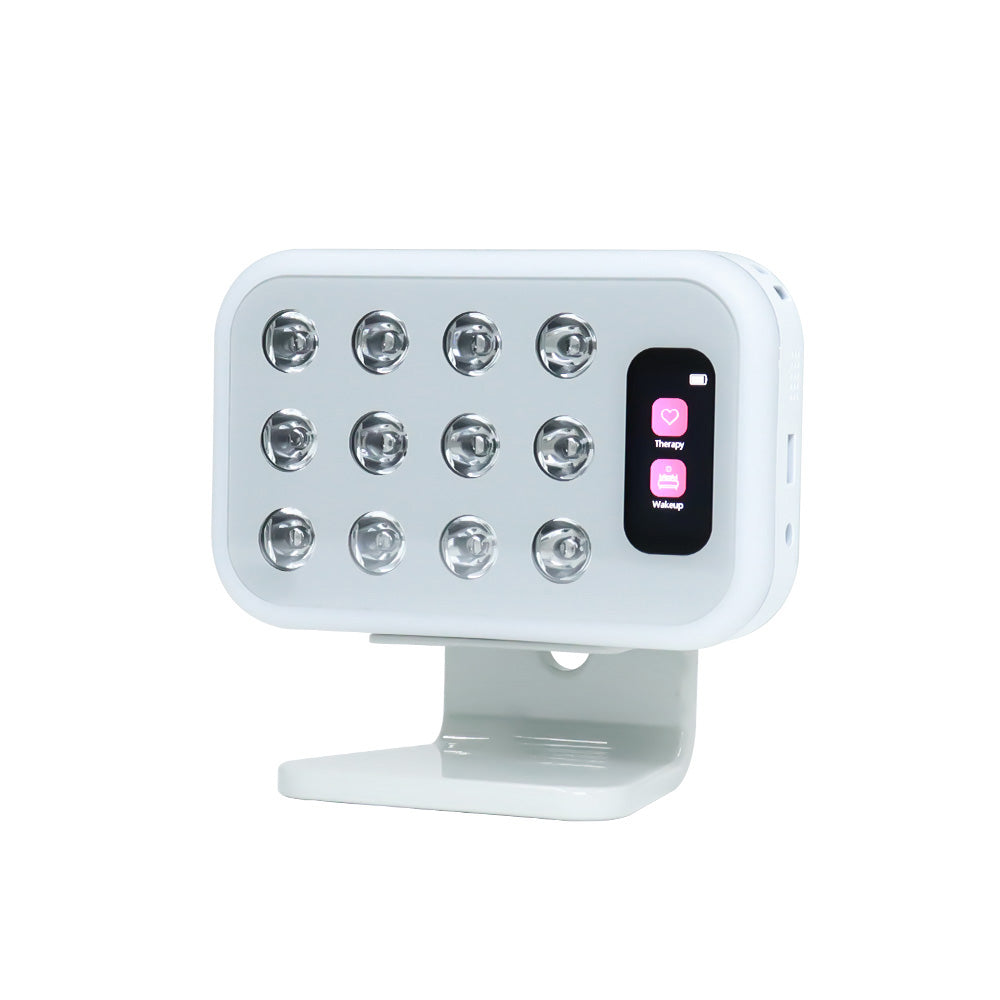 |
If you are one of the millions of people who suffer from persistent or recurring cold sores, red light therapy may offer a natural way to ease your discomfort.
Powerful red and NIR light devices are now available for home use. Our MitoADAPT, MitoPRO, and other product offerings may help - when you use LED red light technology consistently to stimulate the mitochondria, boost circulation, support your body's natural inflammatory response, and preserve your skin's optimal health.
If you are ready to experience the health and wellness benefits of red light therapy, review our wide selection of red light therapy devices and bring home your ideal device.
The Bottom Line
At Mito Red Light, we're dedicated to empowering your wellness journey with cutting-edge solutions to support your body’s natural healing process. Red light therapy offers a new avenue for potentially managing the discomfort and appearance of cold sores.
Consistency, patience, and a holistic approach are key to unlocking the full potential of red light therapy. With our range of products designed for your convenience and comfort, we're here to support you every step of the way.
Embrace the light with Mito Red Light, and let's move towards a healthier, more vibrant you.
Related Articles:
- Contraindications for Red Light Therapy
- What Is Red and Near Infrared (NIR) Light Therapy?
- An Overview of Uses of Red Light Therapy
- Skin Health Tips and Trends
DISCLAIMER: Mito Red Light devices are not clinically proven to diagnose, treat, cure, or prevent any medical conditions. Mito Red Light devices are Class II general wellness devices aimed at affecting the body through supporting cellular function. The scientific studies referenced in this article are for informational purposes only and are meant to educate the reader on the exciting and growing field of phototherapy. To see a list of precautionary warnings and contraindications, click here.
References:
- Dougal G, Lee SY. Evaluation of the efficacy of low-level light therapy using 1072 nm infrared light for the treatment of herpes simplex labialis. Clin Exp Dermatol. 2013 Oct;38(7):713-8. doi: 10.1111/ced.12069. Epub 2013 Jun 3. PMID: 23731454
- Honarmand M, Farhadmollashahi L, Vosoughirahbar E. Comparing the effect of diode laser against acyclovir cream for the treatment of herpes labialis. J Clin Exp Dent. 2017 Jun 1;9(6):e729-e732. doi: 10.4317/jced.53679. PMID: 28638546; PMCID: PMC5474325
- Hargate G. A randomised double-blind study comparing the effect of 1072-nm light against placebo for the treatment of herpes labialis. Clin Exp Dermatol. 2006 Sep;31(5):638-41. doi: 10.1111/j.1365-2230.2006.02191.x. Epub 2006 Jun 15. PMID: 16780494
- de Carvalho RR, de Paula Eduardo F, Ramalho KM, Antunes JL, Bezinelli LM, de Magalhães MH, Pegoretti T, de Freitas PM, de Paula Eduardo C. Effect of laser phototherapy on recurring herpes labialis prevention: an in vivo study. Lasers Med Sci. 2010 May;25(3):397-402. doi: 10.1007/s10103-009-0717-9. Epub 2009 Aug 11. PMID: 19669856
- Muñoz Sanchez PJ, Capote Femenías JL, Díaz Tejeda A, Tunér J. The effect of 670-nm low laser therapy on herpes simplex type 1. Photomed Laser Surg. 2012 Jan;30(1):37-40. doi: 10.1089/pho.2011.3076. Epub 2011 Nov 2. PMID: 22047597
-
de Paula Eduardo C, Aranha AC, Simões A, Bello-Silva MS, Ramalho KM, Esteves-Oliveira M, de Freitas PM, Marotti J, Tunér J. Laser treatment of recurrent herpes labialis: a literature review. Lasers Med Sci. 2014 Jul;29(4):1517-29. doi: 10.1007/s10103-013-1311-8. Epub 2013 Apr 13. PMID: 23584730
